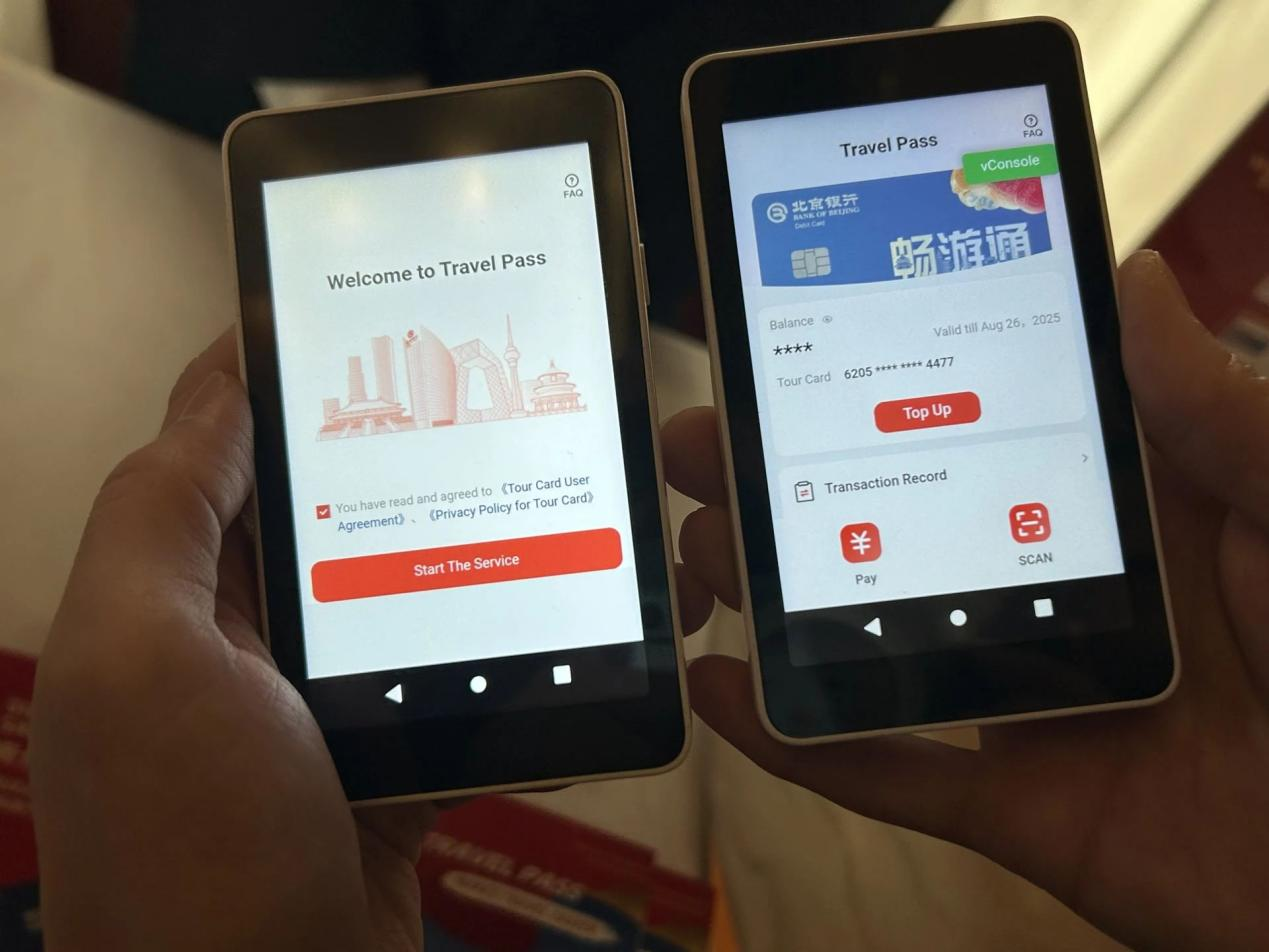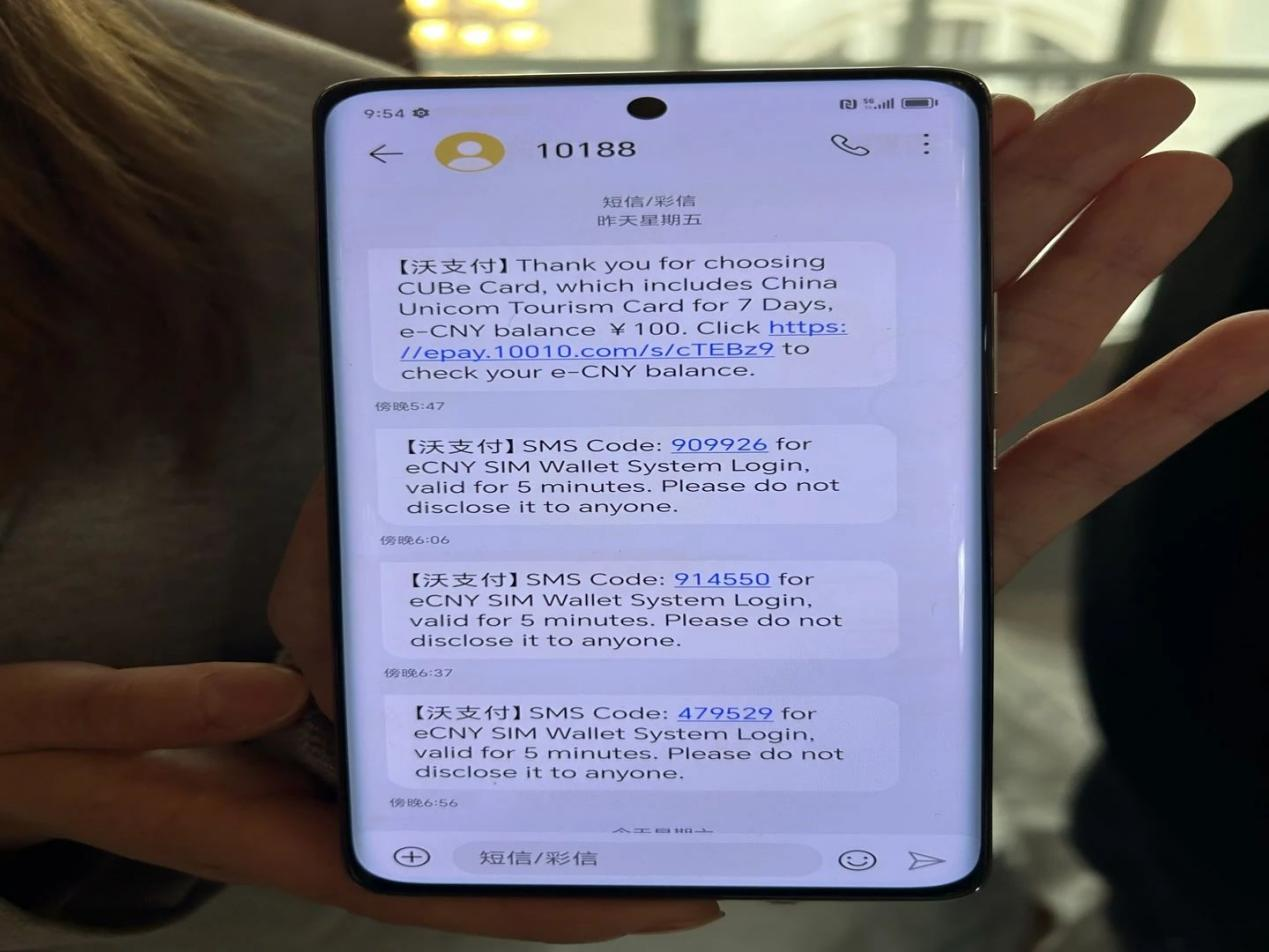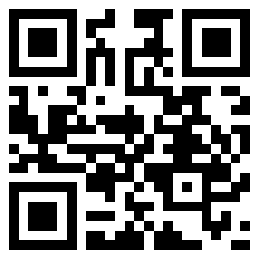To satisfy inbound visitors’ demands for diverse payment solutions, Beijing has accelerated its pace to innovate integrated payment and communication services. The upgraded version of “Travel Pass” (“Changyoutong” device) and CUBe Card (“Mifangka” card), which were introduced on March 1 at the launch ceremony of Visa-UnionPay Zone for Beijing Central Axis, will be officially put on the market in mid-to-late March.
UnionPay QR code: dining in traditional hutong restaurants with easy payments
With a built-in display, camera and card slot, the palm-sized Travel Pass is only the weight of a power bank but compatible with China Unicom SIM cards and bank cards, featuring multiple functions such as Wi-Fi access, short message service, QR code payment and image translation. This portable terminal, able to pay with QR codes, was co-developed by China UnionPay, the Bank of Beijing and China Unicom Beijing. During the pilot phase, foreign visitors could obtain the cards, rent and return the devices at “Beijing Service” counters at Beijing Capital International Airport and Beijing Daxing International Airport, as well as China Unicom Tayuan Branch in the Embassy Area.
The Travel Pass devices have been upgraded again recently. It’s learned that the latest upgrade has integrated Bank of Beijing’s Travel Pass App directly into the devices, saving visitors’ trouble of downloading the App. Free of restrictions by application channels or the business hours of bank branches, visitors are able to apply for a card, top up the card, request refunds, and cancel the card via the App. According to what our correspondent saw on site, it took less than five minutes from uploading passport information to obtaining a card and the device.

“From our previous exchanges with foreign visitors, their top two demands are smooth communication with local SIM cards, and convenient payments with bank cards,” said Li Jianying, retail director of the Bank of Beijing. According to Li, the greatest advantage of the Travel Pass lies in the integration of payment and communication cards, which enables inbound visitors to pay easily, and provides Wi-Fi connections to users’ mobile phones.
Based on functions including displaying QR codes with a single tap, and instant scanning of QR codes, the device can handle payment by both scanning the UnionPay QR code of the merchants and having the code on the device scanned. Inbound visitors can easily make payments when shopping at street stalls, or dining in Beijing’s traditional hutong restaurants. It’s learned that 400 yuan of deposit will be charged and each Travel Pass account currently has a maximum single payment amount of 1,000 yuan, and a cumulative top-up cap of 10,000 yuan.
“Tap & Go”: travel around by public transportation
NFC contactless payment is one of the mainstream payment methods commonly used by foreigners. CUBe Card, a first-of-its-kind “three-in-one” innovative service package, was jointly launched by the Bank of China, China Unicom Beijing, and Beijing Municipal Administration and Communication Card Co., Ltd., integrating payment, communication and public transportation, three everyday services, into one SIM card.
After presenting passports, foreign visitors can apply for CUBe Cards immediately at China Unicom branches at Beijing Capital International Airport, as well as communication service counters and China Unicom branches at Beijing Daxing International Airport. On top of voice calls, 5G data and SMS, the card, allows users to pay with e-CNY by tapping POS terminals, take the bus and subway by tapping the ticket gates and buy tickets to visit designated parks and tourist attractions in Beijing with smart phones.
“Visitors can use CUBe Cards right after inserting the cards into the card slot of their mobile phones,” said Li Feihu, head of the digital currency task force at Bank of China’s Beijing branch. It requires no additional App downloads, registrations, or extra service activation. For visitors whose phones are incompatible with SIM cards or do not support them, service counters offer mobile phone rental services.
The HTML 5 page of CUBe Cards has been launched as well. From our correspondent’s experience, after activating the cards, users can check their balance and browse a list of merchants supporting e-CNY payment via an HTML 5 page link in a short message. The CUBe Card’s single top-up cap has been increased to 5,000 yuan, with a cumulative limit of 10,000 yuan.

Launch in mid-to-late March
Both the Travel Pass devices and CUBe Cards have been on trial in batches, and are expected to officially launch in mid-to-late March.
Travel Pass users will be exempted from rental fees prior to June 30, and users of CUBe Cards could rent mobile phones without rental fees. Currently, visitors also have the opportunity to receive cultural and creative gifts with Beijing characteristics.
In 2024, Beijing received 3.942 million inbound visitors. Since 2024, Beijing Municipal Government and the People’s Bank of China have been intensifying efforts in fostering a multi-layer and diversified payment service system in Beijing in accordance with the strategy of “cards for major expenses, QR codes for minor transaction, and cash as a last resort”, with significant progress in increasing bankcard acceptance.
According to the joint project team of “Integration of Communication Cards and Bank Cards”, the Travel Pass devices and CUBe Cards are important innovative measures in integrating communication and payment services. The team will continue to optimize product solutions and their implementation, so as to improve services for inbound tourists, and enhance the “Beijing Service” brand.


